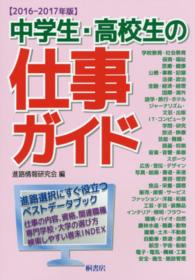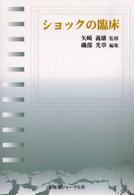- ホーム
- > 洋書
- > 英文書
- > Science / Mathematics
Full Description
Calculating theoretical and percent yield is a fundamental skill for the laboratory. This book primarily targets Organic Chemistry Laboratory courses at the high school or college and university level, as a supplemental resource to help students master this skill. It begins with simple examples from everyday life, demonstrates the importance of balancing the equation, addresses the role of the mole in these computations, discusses different types of liquids, considers the role of significant figures, and culminates with the planning of syntheses. There are suggestions for further reading as well as practice problems and questions to ensure mastery.
Begins with examples from everyday life that enable students to understand the concepts of theoretical and percent yield before applying those concepts to the laboratory.
Addresses the necessity of balancing the reaction equation, the centrality of the mole in these calculations, and the role of significant figures in reporting the answer.
Explains how to approach the calculations when using neat liquids or solutions.
The culmination of this text is the use of the same thought processes to plan the amounts of reactants needed for syntheses of desired quantities of product.
All of the problems in the book include detailed solutions with accompanying text to explain the answers and ancillaries also include suggestions for further reading.
Contents
Chapter 1: What is theoretical yield anyway?
Chapter 2: A balanced reaction equation: The key to everything!
Chapter 3: Dealing with chemical reactions: The mole
Chapter 4: What if a reactant or product is a neat liquid?
Chapter 5: What if a reactant is a solution?
Chapter 6: Using one reagent in excess
Chapter 7: Significant figures
Chapter 8: Planning a synthesis: How much reactant to use?
Chapter 9: Practice problems
Chapter 10: Solutions to practice problems








